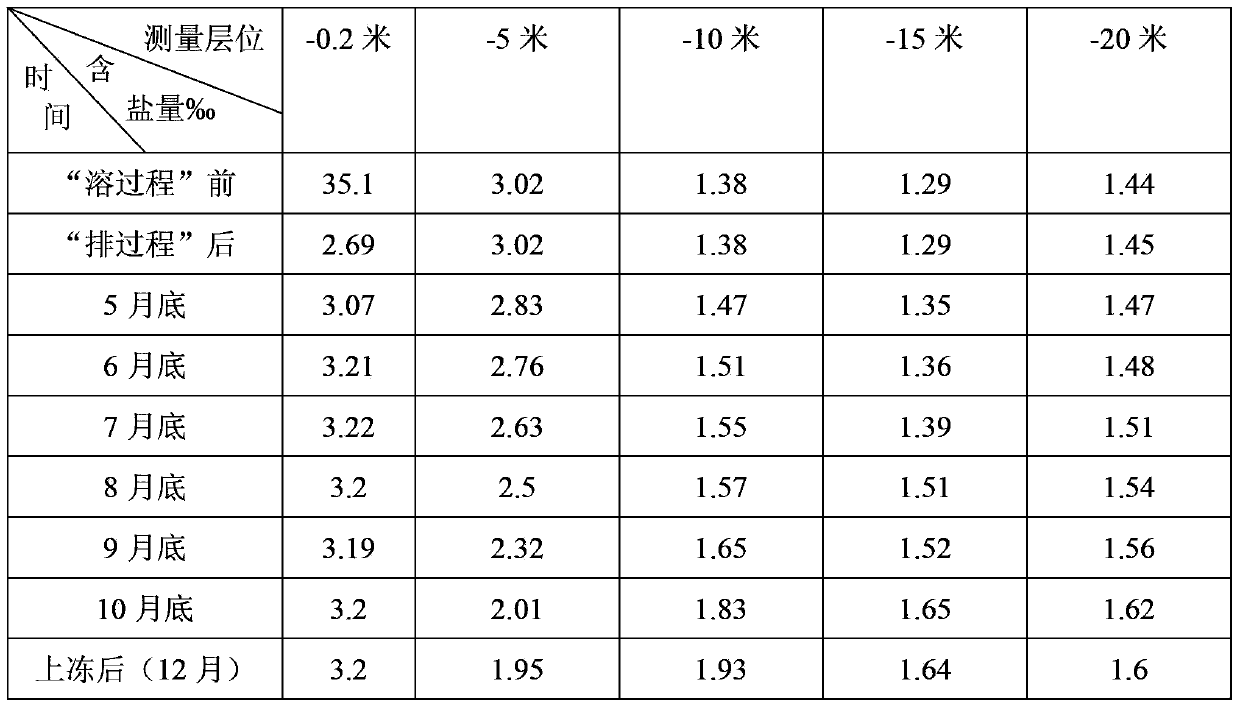Method for improving saline-alkali soil into paddy field in three-dimensional space
A three-dimensional space, saline-alkali land technology, applied in the fields of soil preparation, agriculture, application, etc., can solve problems such as temporary solutions, not the root cause, and achieve quick results, less land occupation, and shorten the time for draining saline and alkaline water
- Summary
- Abstract
- Description
- Claims
- Application Information
AI Technical Summary
Problems solved by technology
Method used
Image
Examples
specific Embodiment approach 1
[0016] Specific implementation mode 1: This implementation mode is a method for improving saline-alkali land into paddy fields in three-dimensional space, which is specifically completed according to the following steps:
[0017] A method for improving saline-alkali land into paddy fields in three-dimensional space, which is specifically completed according to the following steps:
[0018] 1. Set up freshwater wells: set up two freshwater wells per square kilometer on the saline-alkali land to be improved with a water output of 160 to 200 tons per hour;
[0019] 2. Salt washing: 7 to 10 days before rice transplanting in spring, pump the groundwater in the freshwater well into the paddy field according to the water consumption of 100 tons / mu to 140 tons / mu, use a beater to beat, soak for 6 to 8 days after beating, Then drain all the water in the paddy field;
[0020] 3. Detection: Detect the salt content and pH value of the soil after salt washing in step 2. If it does not mee...
specific Embodiment approach 2
[0040] Embodiment 2: The difference between this embodiment and Embodiment 1 is that in step 1, two freshwater wells per square kilometer are set on the saline-alkali land to be improved, with freshwater wells with a water output of 170 to 190 tons per hour. Others are the same as the first embodiment.
specific Embodiment approach 3
[0041] Embodiment 3: This embodiment differs from Embodiment 1 or Embodiment 2 in that in step 1, two fresh water wells per square kilometer are provided with fresh water wells with a water output of 180 tons per hour on the saline-alkali land to be improved. Others are the same as the first embodiment.
PUM
 Login to View More
Login to View More Abstract
Description
Claims
Application Information
 Login to View More
Login to View More - R&D
- Intellectual Property
- Life Sciences
- Materials
- Tech Scout
- Unparalleled Data Quality
- Higher Quality Content
- 60% Fewer Hallucinations
Browse by: Latest US Patents, China's latest patents, Technical Efficacy Thesaurus, Application Domain, Technology Topic, Popular Technical Reports.
© 2025 PatSnap. All rights reserved.Legal|Privacy policy|Modern Slavery Act Transparency Statement|Sitemap|About US| Contact US: help@patsnap.com

